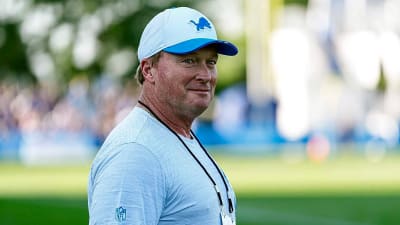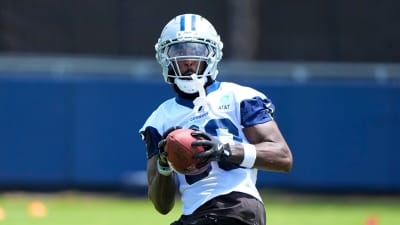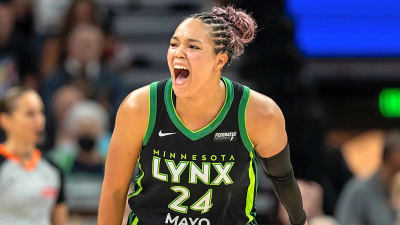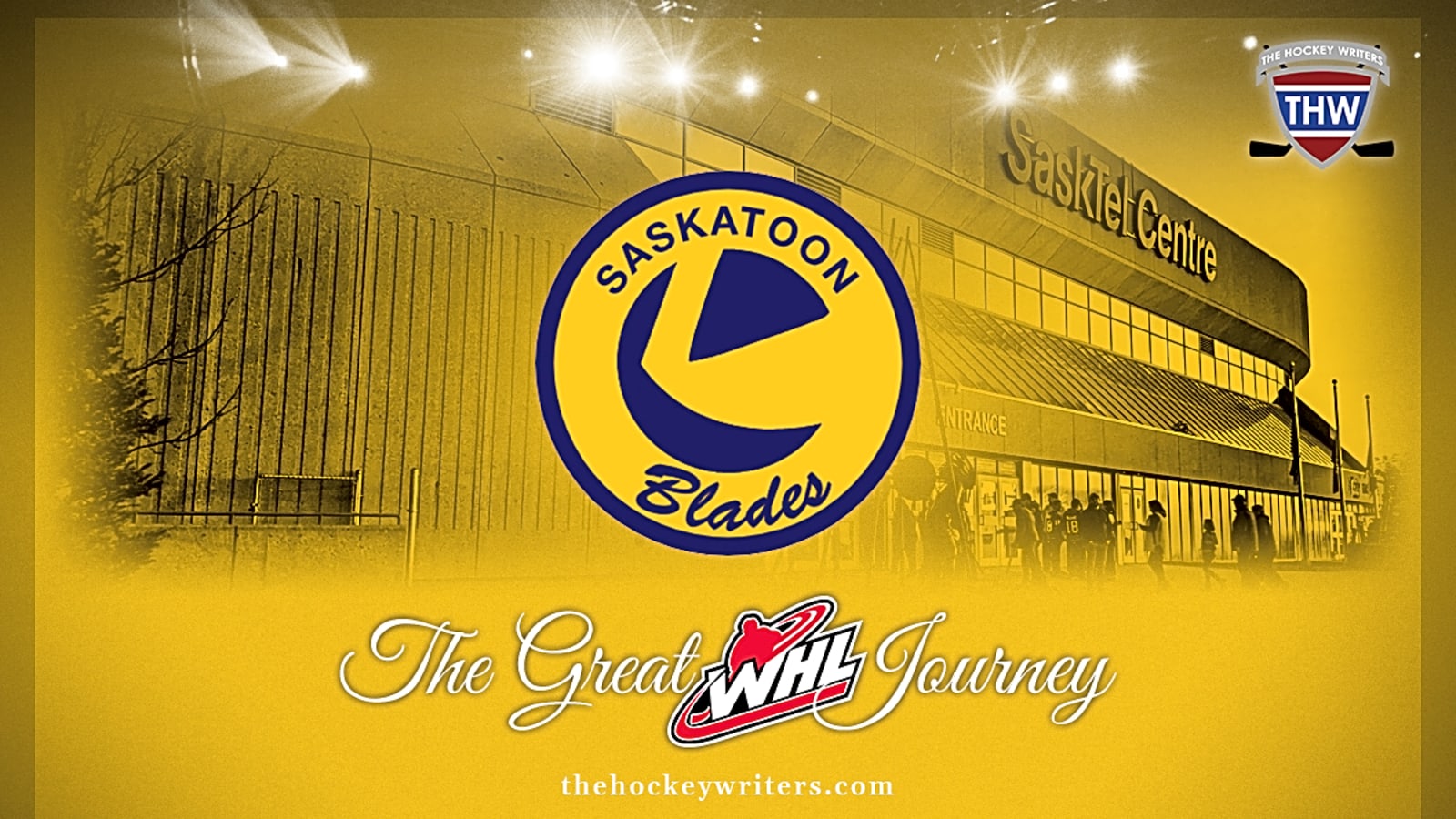
Hockey games have always been a communal experience for me. When I was growing up, it was an event to go to a Medicine Hat Tigers game, and often the whole family would hop into the van and take the hour-long journey into town to watch the game. Other times, it would be a guys’ trip with my dad and me, and we’d meet up with my uncle at the arena, but it was never a solo experience. Hockey was meant to be shared with others.
I kept that mentality as I went away for college outside of Moose Jaw, Saskatchewan. Any time the Tigers came to town, I invited friends to go to the games with me. I’d even use it as date locations, even if my significant other wasn’t much of a hockey fan. However, if I couldn’t get a group together, I didn’t go, no matter how badly I wanted to see the game. There didn’t seem to be a point in going if I couldn’t be there with someone to comment on the plays, celebrate the goals, or complain about missed calls, all while enjoying some arena fries.
When I moved to Saskatoon in 2013, it was the first time in my life that I was living in a city with a Western Hockey League (WHL) team. It was easier than ever to text a friend, pick up tickets, and zip out to the arena after supper. But I still refused to go alone. The first year I was in the city, the Ottawa Senators came out to play a preseason game against the Calgary Flames, and I got seats for my girlfriend and me. Years later, I found out that a Canada/Russia junior game was coming to town, and I was determined to go to it. However, I didn’t buy tickets until I had one friend confirm that he could join me.
As I got more involved with following draft-eligible prospects, I made special efforts to see Nikita Scherbak and Kirby Dach when they were with the team, plus any other highly-ranked junior players who came to town, like Jake Neighbours or Nate Danielson. When the Blades made the playoffs for the first time since I moved to Saskatoon, I needed to be there. But in every single instance, I didn’t go if I didn’t have someone to go with.
But when I met Chad, I quickly learned that community had a different meaning for him. We were introduced to each other through a mutual friend who knew we were both hockey fans, and we started going to games together every few weeks or so. But, while I was content to talk hockey and watch the game, which is how I’d taken in Tigers’ games, Chad was happy to just chat, which he did not only with me while watching the game, but also with anyone he knew he ran into on the concourse, which was a lot of people.
I’d never seen that level of community at a hockey game before; whenever I went as a kid, we were there for the game and little else. But Chad was there for the people, and it opened my eyes to the importance of the community for these junior teams spread across Canada’s westernmost provinces.
Blades History
The Blades have a long history with Saskatoon dating back to the 1940s in the Saskatchewan Junior Hockey League (SJHL). While the team went through many ups and downs and several name changes over the decades, with many people contributing to its success in the city, two names were instrumental in making the team what it is today.
The first is Jim Piggott, who began as the owner of the Saskatoon Quakers franchise in the semi-pro Western Hockey League (SWHL). Piggott wanted to add a junior team to act as a farm system, so he took over the Saskatoon Wesleys in 1956-57, renaming them the Junior Quakers. Although the Jr. Quakers were relatively successful, the senior team was in dire straits and folded not long after the purchase. Suddenly, his farm team was without a partner.
Davide Cranchi shared this with us on Facebook. The Saskatoon Quakers at the World Championships in Italy in 1939! pic.twitter.com/0MMXoOJfP9
— Saskatoon Blades (@BladesHockey) May 5, 2014
After some searching, Piggott purchased the Victoria Cougars in 1961, which he moved down to California to become the Los Angeles Blades. By 1964, the southern Blades were one of the better teams in the SWHL, so he decided to once again make his junior team reflect its parent franchise and renamed the Junior Quakers as the Blades for the 1964-65 season and switched their colours from green to the Blades’ yellow, giving rise to the organization we now know.
The second important name in Blades’ history is Bill Hunter. In the 1940s and 50s, he coached several teams across Saskatchewan, including the senior Quakers. His passion and intensity earned him the nickname ‘Wild Bill,’ and although he didn’t care for it at the time, he truly embodied it after taking over the Edmonton Oil Kings as owner, manager, and coach in 1965. The team had just gone on an unprecedented run of six consecutive Memorial Cup appearances and, with him at the helm, would make their seventh in 1965-66. However, with only two wins to their name, Hunter argued that the structure of hockey put them at a disadvantage over the stronger major junior leagues in Ontario and Quebec.
Instead of working with him, however, the Canadian Amateur Hockey Association (CAHA) demanded that the Oil Kings transfer to a different league for the 1966-67 season. Their current home was a senior league in central Alberta, which they joined out of necessity when their junior circuit shut down in 1956. With no other viable junior league around, Hunter gathered together several SJHL managers equally frustrated with the lack of parity around the prairies, plus one in Calgary, and created the Canadian Major Junior Hockey League (CMJHL). Piggott was one of the early recruits, more than happy to give his Blades a better shot at junior glory.
Yet the CAHA refused to negotiate with Hunter, and instead labelled the CMJHL as an “outlaw league” and banned all members from competing in any major junior-sanctioned events, most notably the Memorial Cup. Several members balked at the punishment and returned to their original leagues, but the Blades remained, convinced that this was the best decision in the long run.
They were right. By 1971, the CAHA softened their stance against the CMJHL, which had changed its name to the Western Canada Hockey League (WCHL) and allowed them to compete for the Memorial Cup, thus creating the modern Major Junior circuit that we know today.
However, the Blades would have to wait until 1989 before they qualified for the prized trophy. They came close, reaching the finals in 1972-73, 1974-75, and 1975-76, but could never get by their opponent, even with Bernie Federko setting scoring records in the league. In 1989, thanks to a brand-new arena, Saskatoon hosted the Memorial Cup, which gave the Blades a bye into the tournament. They nearly won it, too, pushing the Swift Current Broncos into overtime before Broncos’ star Tim Tisdale scored to make it 4-3.
The 1974-75 Saskatoon Blades Hockey Club
— Geoffery Kehrig (@GeofferyKehrig) September 18, 2025
~
· 10 players had at least 1 game in NHL or WHA.
· Top team in the Eastern Division.
· Lost the 7th game of @TheWHL Finals.
· Bernie Federko inducted into @HockeyHallFame
~@BladesHockey @CHLHockey @WHL_History #HockeyHistory #1970s pic.twitter.com/Q993kU93bC
The Blades made the WHL Final twice more in 1991-92 and 1993-94, losing both to the Kamloops Blazers in a seven-game series, and hosted the Memorial Cup again in 2012-13, but didn’t fare quite as well as their first appearance. Since then, it’s been pretty dry for the WHL’s most tenured team. It looked like it might change in 2023-24 after the Blades became the first team in the WHL to secure a playoff berth and the first to hit 40 wins, but their title dreams were killed by the Moose Jaw Warriors in the Eastern Final.
Both Hunter and Piggott are long gone, but their impact on the franchise is immeasurable. Without them, Saskatoon would likely have been left in the dust in junior hockey. However, because of their vision to find a better environment for junior hockey, the Blades are one of the most financially secure teams in the league. Hopefully, one day, they can add an Ed Chynoweth Cup to their long list of accolades.
Franchise Leaders:
- Most Points (Total): Frank Banham (1992-96) – 370
- Most Points (Season): Bernie Federko (1975-76) – 187
- Most Goals (Season): Frank Banham (1975-76) – 83
- Most Games Played: Paul Buczkowski (1990-96) – 337
- Most Wins (Total): Nolan Maier (2017-22) – 122
- Most Wins (Season): Tim Cheveldae (1987-88) – 44
- Retired Numbers: 7 – #7 Brent Ashton and Gerry Pinder; #10 Brian Skrudland; #12 Bob Bourne; #15 Bernie Federko; #22 Wendel Clark; #39 Frank Banham; #44 Chase Wouters
- Highest Drafted Players: Wendel Clark, 1st (Toronto 1985); Blair Chapman, 2nd (Pittsburgh, 1976); Ralph Klassen, 3rd (California – 1975); Kirby Dach, 3rd (Chicago, 2019); Curtis Leschyshyn, 3rd (Quebec, 1988); Fred Williams, 4th (Detroit, 1976)
SaskTel Centre
The SaskTel Centre has the distinction of being the biggest WHL arena not affiliated with an NHL franchise, seating a maximum of 15,100 people. The reason it dwarfs its competition was once again thanks to Hunter. In the 1960s, he turned his attention to professional hockey and sought to bring a team to Edmonton. The NHL wasn’t all that interested, so he helped create the World Hockey Association (WHA), which served as the NHL’s main rival from 1971-1979 and issued the first million-dollar contract in hockey, which was another one of Hunter’s ideas to give the league some credibility.
When the WHA was finally absorbed into the NHL, Hunter set his sights on another small-market Canadian city – Saskatoon. He’d already brought NHL teams to Edmonton and Winnipeg, so why not bring it to Saskatchewan? In 1983, he led a group that purchased the St. Louis Blues and planned to bring them to the small city. Everything was in place – season tickets were sold, an 18,000-seat arena was in the works, and Don Cherry was named as the team’s coach.
Unfortunately, the last thing he needed was support from the league, and it was the one thing he couldn’t secure; the NHL’s Board of Governors quashed the dream with a 15-3 vote. Not wanting to let their plans go to waste, Saskatoon continued with the new arena, opening SaskPlace in 1988, which was renamed the SaskTel Centre when the communication company bought the rights in 2014.

Originally, the Blades played in a downtown arena simply called the Saskatoon Arena, which was built in 1937 and seated just 4,500 people. But when the new SaskPlace Arena was opened, the old one was promptly demolished and is now home to a retirement community. Hunter was opposed to the new location, preferring a downtown location instead, but the city still named the main road to access the new building, “Bill Hunter Avenue.” It’s ironic how things come full circle, as the city approved the building of a new downtown entertainment district in 2023.
I’ve never minded getting to the arena, as there are lots of entrances and parking, and tickets are on the cheaper end of the spectrum. On Ticketmaster, tickets cost around $26 per person for a regular-season game, but some local businesses will sell them for as low as $15 per seat, which I usually do. There’s hardly a bad seat in the house, too, although if you end up behind the media booth, part of the Jumbotron will be obscured. However, those seats aren’t opened until the playoffs or a generational superstar comes to town.
Food and Extras
Summary (prices at the time of the trip)
- Tickets –$23-$31 on Ticketmaster before fees
- Hat – $35-$45
- Jersey – $140
- Puck – $4.50
Everyone has their own routines for going to a game. Mine, which I will attempt to keep as consistent as possible at every venue I attend, will be to arrive at least 30 minutes early to catch some of the warmup and see the food options. It started because I hated the traffic rush and being late, and with most games starting at 7:00 p.m., it was just easier to grab supper at the arena than rush to cook something at home. After doing that for years, I’ve come to look forward to the overpriced options, and being a regular at SaskTel Place, I have a few favourites, but I also wanted to try something new for the first leg of my WHL journey.
Over the last few years, SaskTel Place revamped its kiosks, giving each a different name and a signature option. I love it. Not only are the new options delicious, but I can now usually remember where to go for what I’m looking for, rather than wandering around the concourse, studying each slightly different menu, and looking for the option I was in the mood for. My favourite has been the Street Dog at PB’s Snack Shack, so I went back there first.
For whatever reason, this time the Street Dog didn’t hit right, and I was still hungry by the second intermission, giving me a perfect excuse to ask Chad for a recommendation. Although he doesn’t eat a lot at the games, he suggested the boneless wings and fries from The Classics. Sure, they may be glorified chicken nuggets, but that doesn’t mean they aren’t delicious. I opted for the Sweet Thai Chilli sauce, and it was so good, it may have surpassed my Street Dog as my favourite.
Another thing I’ve grown to love is checking out the souvenir shops. I’ve always been a memorabilia guy, which has become harder to justify as an adult, but I love having something to remember my trip. A jersey is a classic souvenir and the top option for many, but there’s no way I can afford 22 jerseys, and I like finding the unique and interesting items each place has to offer. That will become much more of a novelty as I venture further and further from my home of Saskatoon.
However, for this game, I decided to skip the store since I’m already pretty loaded on Blades merch. While Blades’ jerseys used to be some of the cheapest in the league at around $100, they jumped up to $140 for the 2023-24 season. If you like the smaller things, mini-sticks and pucks are just $5, and a hat starts at around $35. Team hockey cards produced by a local hockey card shop are also available later in the season, going for just $5.
Oct. 14, 2023 – Saskatoon Blades vs. Calgary Hitmen
When I first proposed my plan to see every WHL arena, Chad immediately offered to take me to my first stop, inviting me to join him on Oct. 14, 2023, to see the Blades take on the visiting Calgary Hitmen. Admittedly, it wasn’t an ideal opponent; the Hitmen were sitting much closer to the bottom of the standings than the top, whereas the Blades were sitting on a three-game winning streak in which they outscored their opponents 18-4. But it would be a great opportunity to scout out 2024 first-round hopeful Carter Yakemchuk and ask Chad about his experiences at SaskTel Centre.
Chad has had season tickets for years. He remembers when SaskTel Place hosted the 2010 World Juniors, and less than a season later, he watched Brayden Schenn return to the city he grew up in after his rights were acquired from the Brandon Wheat Kings in 2010. There were some dry years after that, but this year’s team has been one of the best hockey teams he can remember. Tanner Molendyk is easily my favourite player to watch ever. His effortless skating and blinding speed are almost beyond compare, especially in junior. But he’s not alone; Brandon Lisowsky, Egor Sidorov, Trevor Wong, Fraser Minten, and rookie Even Gardner have this team set up to do something they’ve never done before – win a WHL championship.
But when I asked Chad why he keeps coming back to watch the Blades, he gave me a surprising answer – the people.
As I mentioned previously, someone is always stopping by to talk with Chad, whether we’re walking around the arena or sitting in our seats. It truly seems like he knows half the people at the games, and even though I’m much more introverted than him, it’s fun to see how many people he’ll run into at a game. Many of these people are volunteers at the game, too, and have been helping out for just as long or longer than Chad has been coming to the games, making it a perfect example of how a community comes together at these events; without them, much of the spectacle wouldn’t be nearly as engaging, let alone possible.
Aside from the people, Chad also enjoys Blades’ games because he loves studying the game and watching plays unfold. He has a good eye for what’s happening on the ice and can see certain plays developing. He often takes what he sees on the ice in SaskTel and uses that knowledge with his sledge hockey team. Every Blades game he goes to, he learns something new to apply to his own game.
As for the game, the Blades jumped out to an early lead off a beautiful power-play goal from Sidorov, who blasted it from his home on the right side of the net. Calgary looked overwhelmed to start, which wasn’t surprising, but they came back with a vengeance in the second, turning the game into a slow, grinding affair and forcing the Blades to fight for every inch they could get. While that’s great for the Hitmen, it wasn’t so great for fans watching. In the dying minutes of the third period, Calgary pulled their goalie, and the Blades took their chance, with Vaughn Watterodt tucking home the empty-netter.
One thing I like to do at every hockey game I attend is to try and guess the three stars, and this time was no different. I went two out of three this time: Gardner was the easy choice for his 32-save shutout, and I predicted Sidorov would be honoured for his first-period goal and four shots. But I didn’t see Saskatoon throwing a bone to Calgary and choosing their goalie, Ethan Buenaventura, as the second star. He did play well, though, stopping 25 of 26 shots. The final attendance was a bit sparse, too, at just 3,780, but it makes sense against a bottom-ranking team. As for Yakemchuk, he seemed mostly invisible out there, which wasn’t a good sign when playing a top team. I just didn’t see the hype.
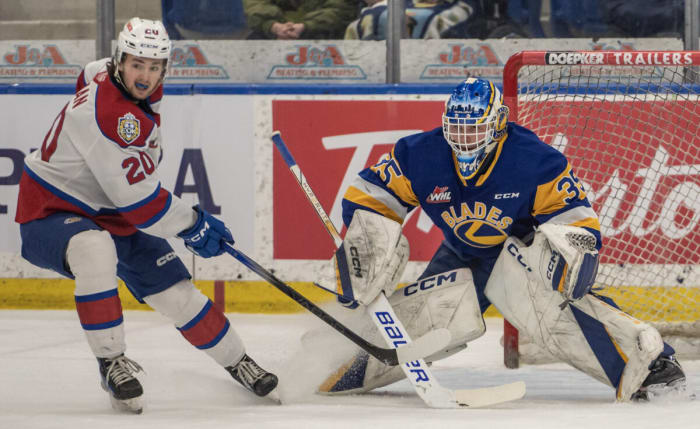
After everyone left the ice, I heard there was going to be an autograph station set up for Rowan Calvert, one of the Blades’ depth forwards. It was a thing I always wanted to do as a kid, but never got the chance. But since it was just the two of us, I figured I might as well stick around, which didn’t bother Chad at all. That’s when I saw one of the great intimacies of junior games – the post-game interview, right in the main concourse, with Les Lazaruk and head coach Brennen Sonne. I snapped a few pictures and noticed a woman was trying to cross my path, so I put my phone away only to realize that she was the mother of one of the Blades’ newest members at the time, Grayden Siepmann, who joined her and his dad after a few minutes.
Although the game wasn’t the best I’ve seen, it was a special night that demonstrated the greatness of junior hockey: players hanging out with kids, signing autographs for weird 30-year-old writers, and seeing how much the community cared for their team. It was the best way I could have imagined I’d start this ambitious adventure.
More must-reads:
- Penguins set to open 2025-26 season with emotional game
- Maple Leafs' Auston Matthews endorses choice to replace Mitch Marner
- The 'MLB playoff debut strikeouts leaders' quiz
Customize Your Newsletter
 +
+
Get the latest news and rumors, customized to your favorite sports and teams. Emailed daily. Always free!

